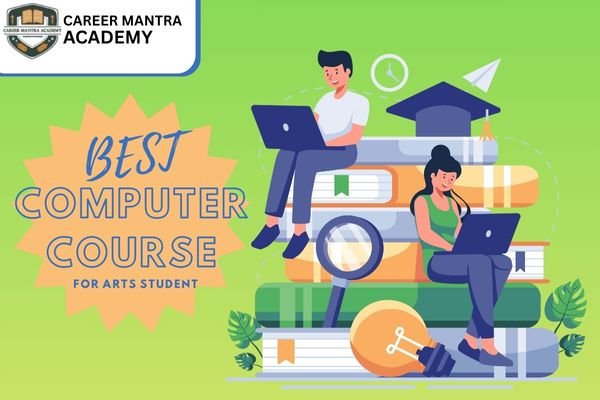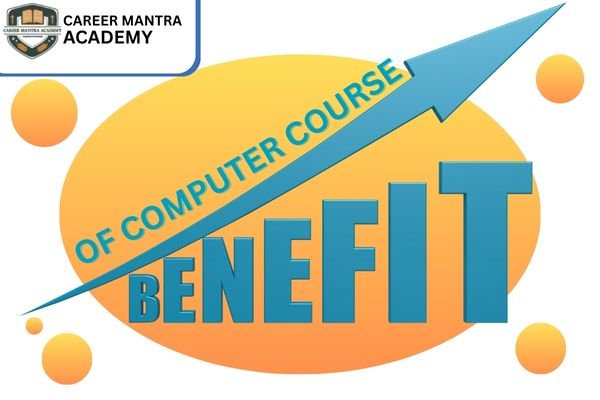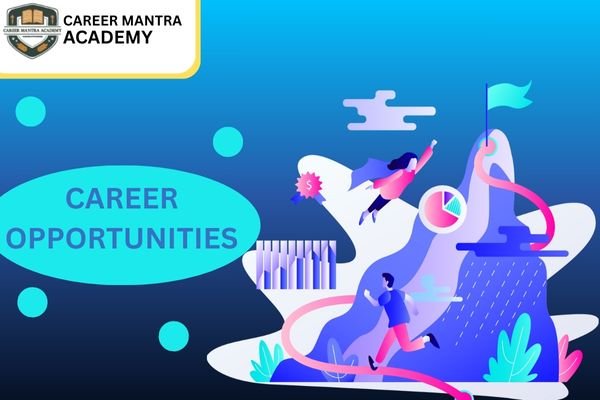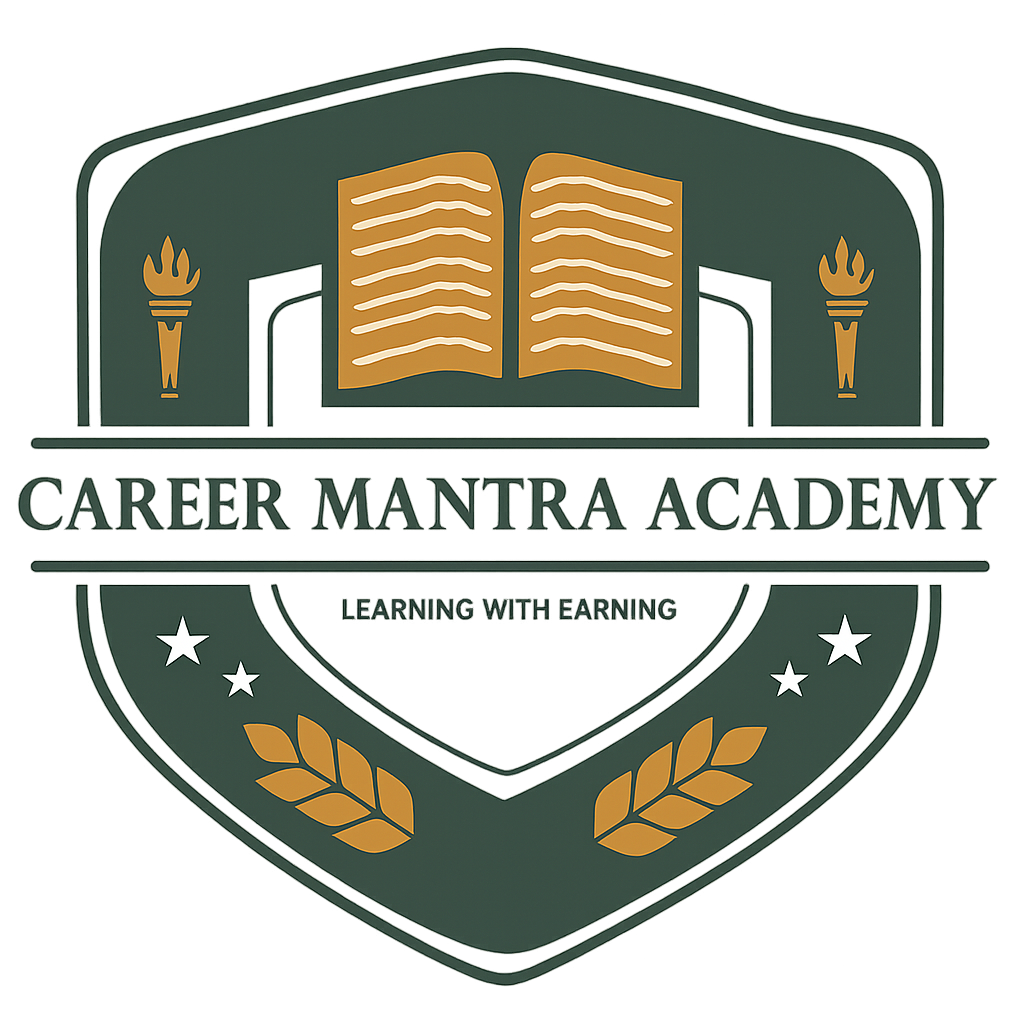Introduction: The best computer course for arts student.
In today’s digital world, computer skills are no longer only important for science or business students. They are also significant for arts students. As more and more jobs require digital skills, taking the best computer course for arts students can help you get a job in a wide range of fields. Computer courses are useful for both creative fields, like graphic design and animation, and professional skills like digital marketing, Tally, or data management. They help you get ready for a job.
These classes are designed to enable arts students to easily apply what they learn in real-life situations, even if they don’t have a technical background. Choosing the right course not only makes you more likely to get a job, but it also gives you confidence in your ability to meet the demands of the modern workplace. Therefore, finding the best computer course for an arts student is a crucial step towards achieving a successful career that is well-prepared for the future.

For Applying Computer Course Click Here…
Why is computer knowledge important for arts students?
For arts students, knowing how to use a computer is important because it opens up more job opportunities, makes them more creative, and gives them the skills they need in today’s digital world. Technology is a part of every field, from doing research online to coming up with creative designs. Students who are good with computers can look into jobs in digital marketing, content creation, design, and office management. It also helps them adapt to the needs of today’s workplaces and makes them more competitive in the job market.
Key points:
- Improves employability
- Supports creative skills
- Helps in research and learning
- Enables freelancing and online work
- Useful in every industry
- Builds digital confidence

What are the benefits of computer skills for an arts student with a background?
For arts students, computer skills are more than just technical knowledge—they are a gateway to modern careers and creative growth. Learning digital tools improves employability, supports creative expression, and opens opportunities in various industries.
Benefits Include:
- Better career scope
Computer skills greatly enhance the career scope of arts students by opening opportunities in fields like digital marketing, graphic design, animation, content writing, and office management. With technology-driven industries growing rapidly, arts graduates with computer knowledge gain an edge in employability and long-term professional growth.
- Enhanced creativity
Computer skills allow arts students to express their creativity in new and innovative ways. With tools like Photoshop, CorelDRAW, video editing software, and digital platforms, they can bring artistic ideas to life. Technology not only refines creativity but also helps in showcasing talent to a wider audience.
- Freelancing options
Computer skills empower arts students to work independently through freelancing. With knowledge in areas like digital marketing, graphic design, content writing, or data entry, they can find projects online and earn income. Freelancing offers flexibility, global exposure, and the chance to build a career without traditional job constraints.
- Research support
Computer skills give arts students easy access to vast online resources, e-libraries, and digital tools that make research faster and more effective. From gathering information to analyzing data, technology helps them develop deeper knowledge, improve academic performance, and stay updated with the latest trends in their chosen field.
- Adaptability
With computer skills, arts students can easily adapt to modern workplace requirements where digital tools are a necessity. From handling office software to collaborating online, technology knowledge makes them flexible and efficient. This adaptability ensures they remain relevant, confident, and capable of meeting evolving industry expectations.
What is the best computer course for arts student today?
Today’s top computer courses for arts students vary depending on their interests, but a number of them provide great career opportunities. One of the best options is digital marketing, which combines technology and creativity and has high demand across all industries. For students with artistic abilities, graphic design and animation are ideal, while Tally and Microsoft Office are best suited for office-based or finance-related jobs. Excellent freelance opportunities can also be found in SEO content writing and web design. These courses aid in the development of contemporary career paths and are simple enough for non-technical students to learn. Students in the arts can attain stability and growth with the correct decision.
What are the top 10 options for the best computer course for arts student?
1. Digital Marketing
One of the most sought-after courses for students studying the arts is digital marketing. It covers online advertising, email campaigns, social media marketing, and SEO. This course offers great career and freelance opportunities in today’s online-driven world, making it ideal for students with creative skills and an interest in business promotion.
Benefits:
- High job demand
- Freelancing opportunities
- Creative career path
- Business promotion skills
2. Graphic Design
Students learn how to make visual content with tools like Photoshop, Illustrator, and CorelDRAW in graphic design. It works great for arts students who are open-minded and creative. This course opens up freelance, startup, and corporate job opportunities in the creative and media industries, from graphics for social media to brand logos.
Benefits:
- Boosts creativity
- Freelancing projects
- Branding knowledge
- Design industry jobs
3. Animation and Multimedia
Students enrolled in animation and multimedia courses learn 2D, 3D, video editing, and visual effects. Arts students can pursue exciting careers in the entertainment, gaming, and advertising industries, which are growing in popularity. It offers both domestic and foreign career opportunities and is the ideal fusion of creativity and technology.
Benefits:
- Creative industry jobs
- Global opportunities
- Gaming and film scope
- High salary potential
4. Tally and Accounting Software
Arts students interested in finance, bookkeeping, or office work can benefit from taking courses on Tally and other accounting software. These courses are popular in businesses and are easy to learn. They prepare students for jobs in administrative offices, small businesses, and accounting firms where financial records are crucial.
Benefits:
- Easy to learn
- High demand in offices
- Stable career path
- Finance-based jobs
5. MS Office and Advanced Excel
Arts students can learn the basics of MS Office and Advanced Excel in these courses. They talk about Word, Excel, PowerPoint, and more advanced spreadsheet skills. These are necessary for jobs in an office, research, and working with data. These skills are essential for administrative positions, enhancing students’ efficiency and confidence in professional settings.
Benefits:
- Office job readiness
- Improves productivity
- Widely applicable
- Boosts efficiency
6. Web Designing
To design a website, you need to know HTML, CSS, JavaScript, and CMS platforms like WordPress. It’s a great choice for arts students who want to make and design websites. Students can learn about freelancing, starting their own website-based business, or getting jobs in IT and creative fields through this course.
Benefits:
- Freelancing projects
- Website development skills
- Creative career option
- High demand
7. Content Writing and SEO
If you are an arts student with good writing skills, content writing with SEO (Search Engine Optimisation) is a great job for you. It teaches you how to write blogs, articles, and other web content that is good for search engines. This class teaches you how to work for yourself and in the digital world, especially in marketing agencies, startups, and online business platforms.
Benefits:
- Improves writing skills
- Freelancing income
- Digital career scope
- Demand in startups
8. Computerized Data Entry
Arts students are prepared for administrative and clerical positions through computerised data entry courses. They entail typing, database management, and computer software organisation of business data. Because these positions are found in a variety of industries, they are a dependable choice for students seeking low-tech, fast-paced employment.
Benefits:
- Quick job option
- Easy learning curve
- Widely required skill
- Steady income
9. Video Editing
Students who take video editing courses learn how to use programmes like Filmora, After Effects, and Adobe Premiere Pro. There are many advantages for arts students interested in media, film, or content production. The need for qualified video editors has grown globally as a result of the growth of YouTube and digital platforms.
Benefits:
- Creative job scope
- High freelancing demand
- Supports media careers
- Global opportunities
10. Computer Basics and IT Literacy
Basic computer courses teach you the basics, like how to use an operating system, type, the internet, and basic office tools. These are best for arts students who want to gain confidence before taking more difficult classes. It makes sure you have a solid base of knowledge for work, school, or just using a computer every day.
Benefits:
- Strong foundation
- Beginner-friendly
- Essential daily skill
- Builds confidence
How to select the best computer course for arts student after 12th?
The best computer course for an arts student after high school is determined by their skill level, career objectives, and personal interests. Students who want to pursue creative careers can choose to study video editing, animation, or graphic design. Data entry, MS Office, or Tally are options for those interested in business and office work. Web design, content writing, and digital marketing are excellent options for students seeking flexible careers.
The length of the course, the scope of your career, and whether you prefer corporate or freelance work should all be taken into account. While long-term courses offer deeper expertise, short-term courses are best for immediate employment. Even without a technical background, arts students can have successful careers if they make the right decision.

What career opportunities open up after computer courses for arts students?
Computer classes give arts students a lot of job options because they combine creative and technical skills. Students can work in digital marketing, managing social media, graphic design, and animation. Freelancers and businesses can both use content writing and SEO. There are a lot of jobs in the media, entertainment, and IT industries that involve web design, video editing, and multimedia.
If you know how to use Tally, MS Office, and enter data, you could get a job as an office manager, accountant, or administrator. These classes also let arts students work from home, start their own online business, or freelance, giving them freedom and financial independence. Overall, arts graduates who know how to use computers have a much better chance of getting a job and moving up in their careers.
Can an arts student do computer courses?
Yes, a student of the arts can take computer courses. The majority of computer courses are intended for novices and don’t call for a technical or scientific background. Digital marketing, graphic design, Tally, animation, web design, and data entry are all easily mastered by arts students. These classes are easy to understand because they place more of an emphasis on useful skills than intricate theories. Through computer courses, an arts student can develop a successful career in both creative and professional fields with the correct training.
Why choose a career mantra academy for computer courses after 12th?
Career Mantra Academy is a great place for arts students who want to take computer courses after 12th grade because it has experienced teachers, hands-on training, and a curriculum that is relevant to the job market. The academy teaches things like digital marketing, graphic design, Tally, MS Office, web design, and more through hands-on activities. Their experienced teachers make sure that students understand both theory and how to use it in real life.
Career Mantra Academy helps students build confidence and learn skills that will help them get a job by offering flexible course lengths, help with finding a job, and up-to-date learning materials. Students who choose this academy will get a good education in the arts, training for jobs, and chances to do well in both freelance and corporate jobs.
Conclusion.
Selecting the right computer course for an arts student can change their career prospects and give them access to a wide range of opportunities. Arts students can use their creativity and technical skills together in fields like digital marketing, graphic design, animation, web design, and Tally. Taking computer classes makes you more likely to get a job, be able to work as a freelancer, and be able to adapt to changes in the workplace. Arts students can build a successful career that is ready for the future by choosing the right course based on their interests and career goals.
Career Mantra Academy and other similar schools offer hands-on training, expert advice, and help finding a job, which makes it easier for students to build their confidence and move up in their careers in today’s competitive digital world.
FAQs
Which computer course is best for an arts student?
The best computer course for an arts student depends on personal interests and career goals. Popular options include digital marketing, graphic design, animation, web design, Tally, and content writing. These courses enhance creativity, provide freelancing and job opportunities, and help arts students build a strong, future-ready career.
Which 6-month computer course is best?
The best 6-month computer courses for arts students are digital marketing, graphic design, web design, animation, content writing with SEO, and Tally. These short-term courses provide practical skills, quick job readiness, freelancing opportunities, and enhance career growth within a short duration.
Which computer course is very useful?
The most useful computer course for arts students depends on career goals, but digital marketing stands out as highly practical. It offers strong job opportunities, freelancing potential, business promotion skills, and is in demand across industries, making it valuable for long-term career growth.
How do I choose a computer course?
Choosing a computer course depends on your interest, career goals, and skill level. Identify whether you prefer creative fields (graphic design, animation), business/office roles (Tally, MS Office), or digital careers (digital marketing, content writing, web designing). Consider course duration, career scope, and freelancing or job opportunities before making a decision.
What computer course is easy?
For arts students, easy computer courses include MS Office, Tally, computerized data entry, basic computer literacy, and content writing with SEO. These courses are beginner-friendly, require no technical background, and help students quickly gain practical skills for office jobs, freelancing, or further advanced courses.
What are the 5 basic computer skills?
The 5 basic computer skills every student should have are:
1. Typing and Word Processing – Using MS Word or Google Docs efficiently.
2. Spreadsheet Management – Basic Excel skills for data handling.
3. Internet and Email Usage – Browsing, online research, and professional email communication.
4. Presentation Skills – Creating slides using PowerPoint or Google Slides.
5. Basic Computer Literacy – Understanding operating systems, file management, and basic software usage.
Which computer skill is best for a job?
The best computer skill for a job depends on the role, but MS Office (Word, Excel, PowerPoint), digital marketing, and Tally are highly valuable. These skills are widely used in offices, businesses, and freelancing, making candidates more employable and ready for diverse professional opportunities.
What is the full form of computer?
The full form of COMPUTER is commonly described as:
C – Commonly
O – Operated
M – Machine
P – Particularly
U – Used for
T – Technical
E – Education and
R – Research
A computer is an electronic device that processes data and performs calculations automatically. It is used widely for education, research, business, communication, and entertainment. Computers help in storing, analyzing, and retrieving information quickly and efficiently. They have become an essential tool in almost every field, allowing arts, science, and commerce students to enhance their learning and productivity. By learning computer skills, students can work smarter, access global resources, and open doors to modern career opportunities.
